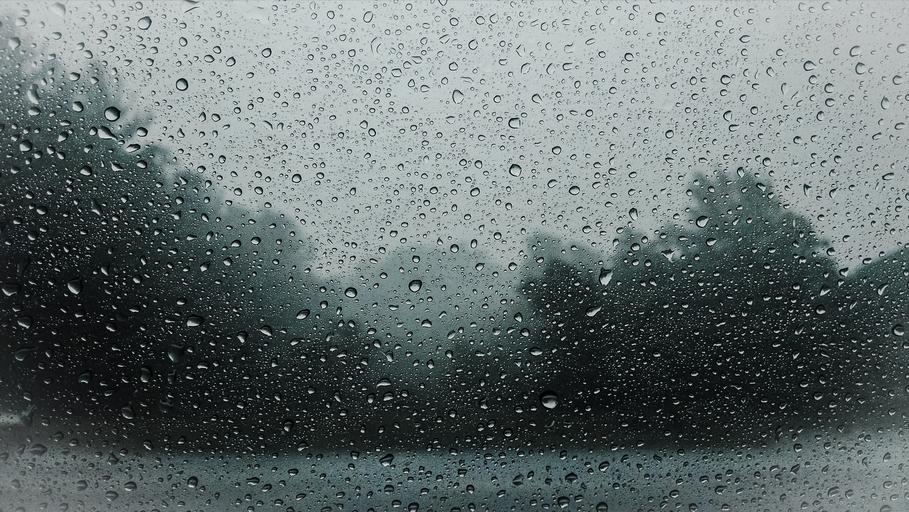With powerful winds, driving rains, and swollen waterways constantly looming as deadly threats, hurricane season is perhaps the most challenging time of the year for habitual drivers in storm-prone regions. A carefree, imprudent attitude can be dangerous and even fatal when intense storms are in the area. To keep yourself and your passengers safe, you’ll need to buckle up and take hurricanes seriously.
The most important driving tips are those that relate to safety. Hurricane season driving directions are especially crucial since they’ll help you get through the most dangerous part of the year without putting your life at risk. To needlessly overlook these critical pieces of advice is to endanger your physical well-being recklessly.
From staying informed to driving carefully, there’s a lot you can do to minimize the risks that hurricanes pose for drivers. With a bit of prudence and a responsible attitude, you can stay on the road without ever putting your life on the line. Here are the top 10 hurricane driving tips to keep in mind.
Inform Yourself About Hurricane Season
First, it’s essential to understand the nature of hurricanes and recognize the risk they pose for regular drivers. The season extends from June through November, with August, September, and October typically bringing the worst storms. This is because hurricanes tend to form when the ocean has been warmed by the heat of the summer months. A typical season will bring 5-10 hurricanes, about half of which are considered “major.”
In addition to hurricanes, late summer and early fall see several tropical depressions and tropical storms. While these weather events aren’t as powerful as hurricanes, they can still be dangerous and disruptive for drivers. The potential flooding and wind damage from these smaller storms can close roads and create hazardous driving conditions.
Understanding hurricanes is the first step toward actually preparing for them. With a basic knowledge of what the season entails, you’ll be ready to make the necessary adjustments when the year’s first storms head your way.
Pay Attention to the Forecast
The best way to stay safe during hurricane season is to avoid driving in dangerous weather conditions. You can do this by carefully monitoring the weather forecasts and planning your travel accordingly. While meteorology is far from perfect in predicting the strength, timing, and path of major storms, it can still do a lot to inform your decisions.
Knowing hurricanes and other tropical cyclones are in season, you should always check the forecast before driving through a storm-prone region. If you see that you’ll be going through a severely affected area, then you’re better off plotting an alternate route. No job, trip, or visit is worth putting your life at risk.
Never underestimate the strength of a hurricane or the seriousness of weather advisories. Meteorologists don’t hype up the power of storms to scare people unnecessarily. They call attention to the potential dangers of hurricanes because they recognize how deadly a severe storm can be. Shrugging off a nasty forecast is a foolish, dangerous decision.
It’s also important to remember that storms are capricious, and forecasts are constantly changing. Just because yesterday’s report suggested your route should be clear, you can’t be sure today’s forecast doesn’t include an update. Check the weather reports regularly to ensure you’re up to date on all the latest developments. It’s never too late to make an intelligent, prudent decision.
Get Off the Road if Dangerous Conditions Set In
You might find yourself stuck driving through a hurricane despite your precautions. When this happens, it’s essential to stay calm, assess the situation, and do what’s necessary to keep yourself and your passengers out of harm’s way.
Hurricanes can bring all sorts of nasty weather, including:
- Heavy rains
- Powerful winds
- Flooding
- Storm surges
- Tornados
Any of these conditions can make driving a dangerous proposition. Heavy winds could push, pull, and even flip your vehicle, while flooding can create pockets of perilously deep water. Rather than take your chances with these deadly hazards, you’re much better off playing it safe and getting off the road.
While any pull-off is better than a misguided attempt to plow ahead, you should try to find a sheltered place to park your vehicle. Look for a spot behind a building since the shelter from the wall should protect you from the worst of the hurricane’s winds.
Be Aware of Windy Conditions in the Leadup to the Storm
Hurricanes aren’t television programs, and they’re not confined to a predetermined schedule. This means they don’t suddenly turn on and turn back off at a predictable moment in time. You should be aware of the potential for dangerous conditions in the days and hours before the storm reaches an area.
Don’t assume a morning drive will be safe because a storm isn’t expected to hit until the evening. Some symptoms of the hurricane, especially the wind and rain, will arrive well before the storm’s eye passes your region.
It turns out that the “calm before the storm” isn’t always so calm after all. Keep this in mind when you’re making your plans.
Always Plan Ahead
If you’re someone who typically enjoys flying by the seat of your pants, you’re going to have to change your ways when hurricane season rolls around. A lack of preparation and concern could see you drive blindly into the eye of a deadly storm. With storms as dangerous as hurricanes in the area, you owe it to yourself and your loved ones to plan your trips.
In addition to watching the forecast, planning a safe route, and checking for any last-minute developments, you should also have a plan B in mind if things take a sudden turn for the worse. Decide ahead of time where you could stay if the storm were to veer into your path suddenly. Let people know that your arrival could be delayed. Have some alternate routes mapped out that you could take at a moment’s notice. This additional planning might turn out to be unnecessary, but it could also end up making all the difference.
Take it Slow
Perhaps you end up getting caught in a storm with no safe place to pull off of the road, or maybe you find yourself in conditions that are unruly but still driveable. Whatever the reason you have to drive through a storm, you should do everything you can to make the journey as safe as possible. These safety measures begin with a commitment to taking it slow.
The middle of a hurricane is no place to break speed records or make up for the lost time. The roads are likely slippery, the puddles are surprisingly deep, and the wind could blow your vehicle into adjacent traffic. All of these problems are exacerbated by reckless speed.
Driving at a high velocity in dangerous conditions is among the best ways to lose control of your vehicle. Not only will such careless behavior put your own life in danger, but it will also imperil your passengers and all the other people on the road. Recognize that human life is more valuable than arriving at your destination on time and drive only as fast as the conditions safely allow for.
Watch Out for Damage to the Roads
The wind, rain, and flooding that hurricanes bring will often damage roads and the surrounding infrastructure. Keep your eyes peeled for all sorts of damage, including:
- Downed power lines
- Washouts
- Fallen trees
- Cracked pavement
Any of these issues can create hazardous driving conditions. If you drive carefully and remain aware, however, you should avoid them and stay safe.
Whenever you encounter an obstacle that can’t be passed, do the responsible thing and pull over to the side of the street. Trying to maneuver around a treacherous stretch of road could have disastrous consequences. You can never be sure that a damaged patch of pavement isn’t on the verge of further collapse.
Whenever you’re out driving during or after a hurricane, you should pay attention to radio traffic reports. By listening carefully for road closures and revising your route accordingly, you can limit disruptions and keep yourself safe.
Never Drive Through High Water
Trying to drive through a flooded stretch of road is the single most dangerous maneuver a driver can attempt during a hurricane. There are several reasons for this. For one thing, some flooding can be deceptively deep. What seems like a small puddle could be a dip in the road that’s been filled with water.
Flooded roads can also be filled with downed power lines, tree fragments, and other pieces of scattered debris. The powerful winds have a nasty way of grabbing dangerous objects and depositing them in flooded roadways. All this detritus can be hazardous for your vehicle. Even if the water is shallow enough for you to drive through, you could still find your tires punctured or your exhaust system mangled by the time you get to the other side.
Instead of needlessly risking your vehicle and your safety, avoid driving when you can’t see the road. No patch of water is a gamble worth taking. Turn around, plan an alternate route, or bide your time until the street is once again safe enough for travel.
Prepare for Traffic Jams
The hazardous driving conditions caused by a hurricane make traffic jams much more likely than under normal circumstances. The road damage described above will bring traffic to a standstill, while the slippery roads and high winds make accidents more common. Whenever you head out during a storm, it’s worth keeping in mind that traffic is likely to slow you down.
Some jam-ups will last longer than others. A minor accident or a fallen tree might be cleared up in a matter of minutes, while a washout could incapacitate a road for hours or even days. Follow traffic reports to avoid traffic jams before you get stuck in them.
Travel With Extra Supplies
Nasty weather adds an element of unpredictability to any road trip. You never know when a traffic jam, road closure, or sudden burst of dangerous winds could force your progress to a halt. To keep yourself safe under these circumstances, consider taking the following precautions:
- Pack extra food and water in case you end up stranded away from necessary supplies.
- Keep your gas tank as full as possible to avoid running out in an unexpected traffic jam.
- Bring along a paper map in case you suddenly find yourself without internet or access to a phone charger.
- Bring a flashlight for any nocturnal accidents or mishaps.
While you shouldn’t need all these extra supplies, you never know when disaster could strike. It’s always better to be prepared, especially when you know a hurricane is in the area.
Conclusion: Stay Home When You Can
All of these hurricane season driving tips are superseded by a larger, overarching piece of advice: Never drive through a hurricane if it isn’t necessary. Humans are asking for trouble when they underestimate the power of nature. Even when you take all the precautions listed above, you’re still tempting fate by driving through the wind and rain of a tropical cyclone.
Hurricane season is a time for prudence and caution among drivers in storm-prone regions. A reckless attitude could spell disaster for your vehicle, your health, and even your life. By taking the steps outlined above, you’ll keep yourself safe and minimize the risk of car accidents.

